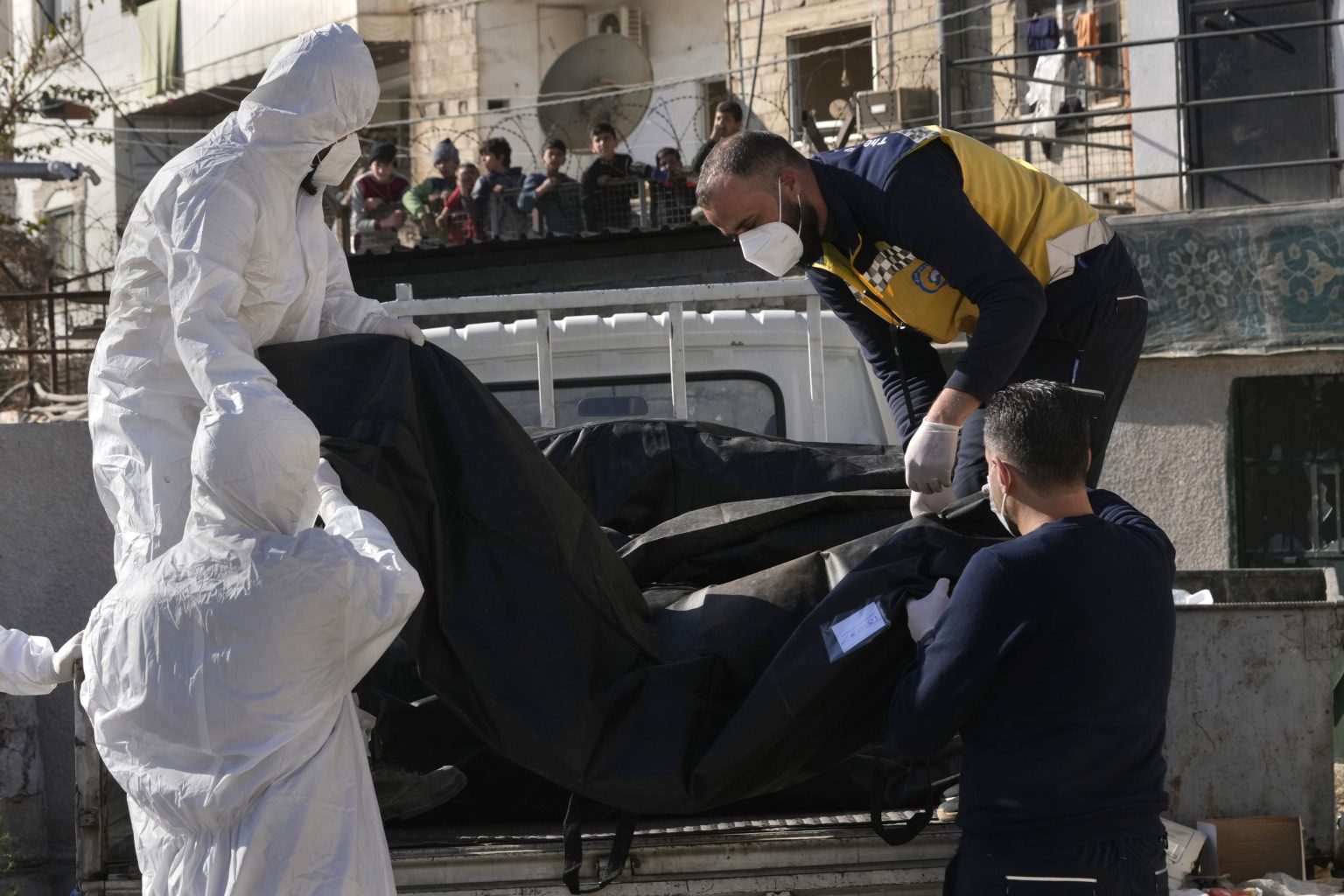The discovery of a mass grave in the Damascus suburb of Sayyida Zeinab unveils a grim chapter in the aftermath of Syria’s protracted civil war. Containing at least 21 bodies and numerous fragmented remains, this grave site, situated in an area formerly occupied by Hezbollah and Iran-backed militias allied with the ousted Assad regime, serves as a stark reminder of the widespread violence and human rights abuses that characterized the conflict. The presence of a morgue, field kitchen, and drugstore at the site further implicates these militias, suggesting a systematic and organized approach to violence. The recovery of incomplete remains and small bone fragments raises concerns about the use of explosive devices or other brutal methods, painting a chilling picture of the atrocities committed. This discovery underscores the immense challenges facing Syria as it grapples with the legacy of Assad’s rule, marked by displacement, destruction, and an unknown number of disappeared individuals.
The significance of this finding transcends the immediate tragedy. It symbolizes the widespread suffering endured by the Syrian people under Assad’s regime, particularly in areas like Sayyida Zeinab, which were strategically important and heavily militarized. The area’s proximity to the revered Sayyida Zeinab shrine, a pilgrimage site for Shia Muslims, adds another layer of complexity. While the shrine itself attracted religious devotees, its surrounding areas became a battleground, subjected to bombings and other attacks, often claimed by extremist groups. This juxtaposition of faith and violence underscores the devastating impact of the war on Syrian society, where sacred spaces were not immune to the conflict’s reach. The discovery of the mass grave has prompted international attention and renewed calls for accountability, as the sheer scale of the atrocities committed under Assad’s rule begins to surface.
The discovery of the mass grave in Sayyida Zeinab contributes to a growing body of evidence documenting the systematic human rights abuses perpetrated under Assad’s rule. This grim revelation aligns with reports of numerous other mass graves discovered across Syria, highlighting the widespread and systematic nature of the violence. The White Helmets, a volunteer rescue organization that operated in opposition-held areas, have played a crucial role in documenting these atrocities, often at great personal risk. Their efforts, alongside those of other humanitarian organizations, are essential in piecing together the fragmented narrative of the conflict and pursuing justice for the victims. The scale of the atrocities unearthed evokes comparisons to historical horrors, prompting calls for international investigations and accountability for those responsible.
The process of identifying the remains and notifying families presents a daunting task, compounded by the deteriorated state of the bodies and the fractured infrastructure in post-conflict Syria. The challenges are further exacerbated by the sheer number of missing persons from the conflict, estimated to be in the tens of thousands. This underscores the immense humanitarian crisis facing Syria, where families are left searching for answers and closure amidst widespread destruction and instability. The efforts of organizations like the White Helmets and other humanitarian groups are crucial in providing support to these families and ensuring a dignified burial for the victims. This painstaking work represents a critical step towards healing and reconciliation in a nation deeply scarred by war.
The international community faces a moral imperative to address the atrocities revealed by the discovery of the mass grave in Sayyida Zeinab. The scale of the violence evokes comparisons to historical horrors, demanding a comprehensive and coordinated response. Investigations into war crimes and crimes against humanity are essential to holding perpetrators accountable and deterring future atrocities. However, the political complexities of the Syrian conflict, involving various regional and international actors, pose significant challenges to achieving justice. The ongoing instability in the region further complicates efforts to access affected areas, gather evidence, and ensure the safety of investigators and humanitarian workers. Nonetheless, the pursuit of justice remains a crucial step towards building a more stable and just future for Syria.
The discovery of the mass grave in Sayyida Zeinab serves as a powerful reminder of the devastating human cost of the Syrian civil war. It underscores the urgent need for accountability, justice, and lasting peace in a nation grappling with the profound consequences of a protracted and brutal conflict. The ongoing efforts to identify the remains and support the families of the victims are a testament to the resilience of the Syrian people and the commitment of humanitarian organizations working tirelessly amidst challenging circumstances. However, the road to recovery and reconciliation remains long and arduous, requiring sustained international support and a commitment to addressing the root causes of the conflict. The mass grave in Sayyida Zeinab stands as a stark symbol of the war’s enduring legacy and the imperative to prevent future atrocities.

